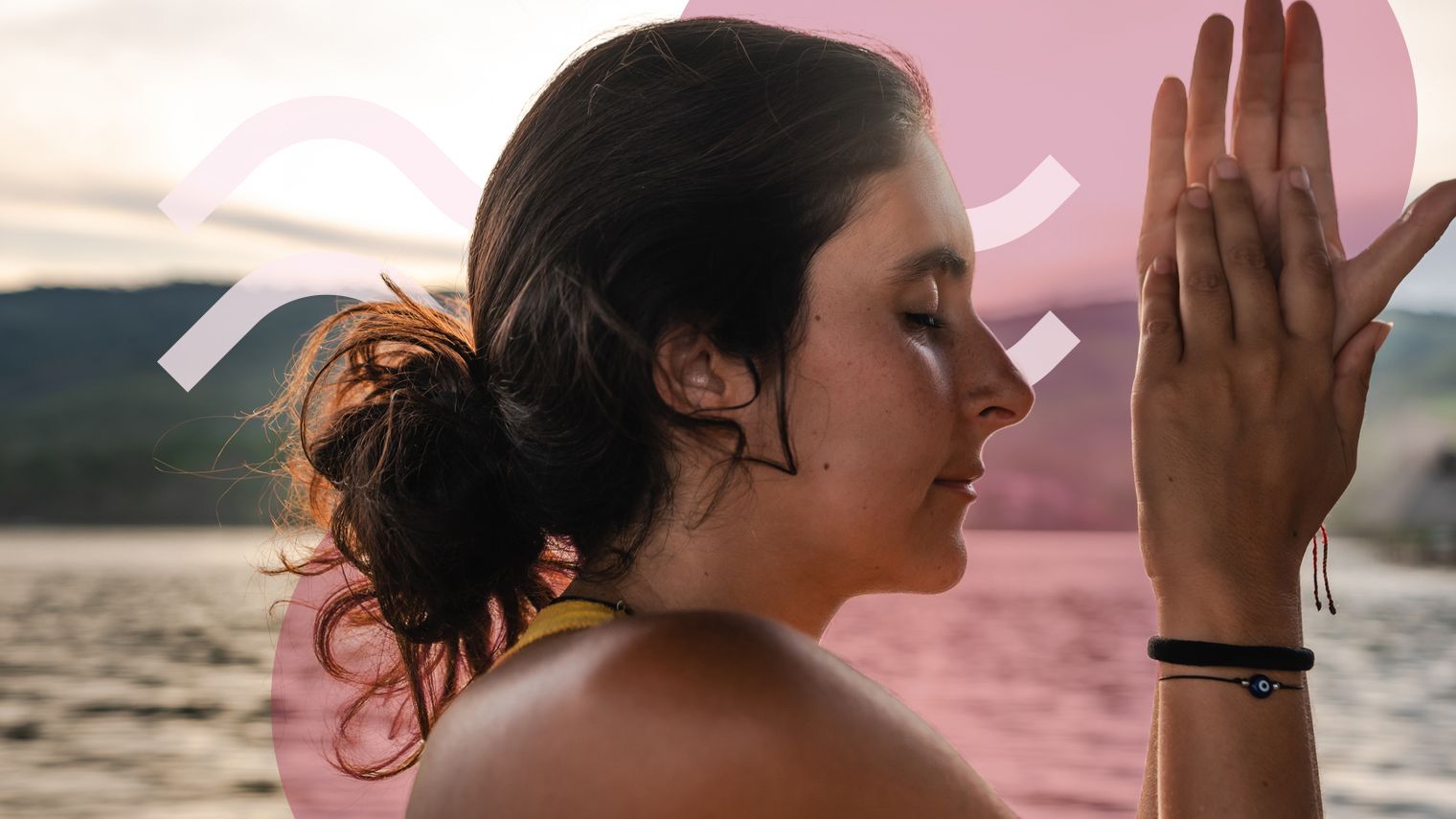How Meditation Helped Relieve My Cancer-Related Health Anxiety
May 18, 2023
Content created for the Bezzy community and sponsored by our partners. Learn More

Photography by Luis Herrera/Stocksy United
Though I felt relieved after learning I had no evidence of disease, I soon began to worry that every little ache or pain was a breast cancer recurrence. Meditation helped quell those thoughts and fears.
Not long after my bilateral mastectomy, I received a hard copy version of my pathology report in the mail. Though I already knew the information those pages contained, I carefully opened the envelope with nervous anticipation. Unfolding the paper, I scanned the page until my eyes landed on four glorious words: No evidence of disease (NED).
An NED outcome is the ultimate goal for anyone with cancer, and seeing those magical words printed before me instilled a sense of relief and gratification. All that I’d just been through — the initial stage 2 invasive ductal carcinoma with a BRCA2 mutation diagnosis, the months of chemotherapy, and the intense surgery — were worth it. I would survive.
But as the days after that best-possible outcome passed, the relief faded into something unexpected. Fear. Anxiety. Every little ache or pain sent me down a fear spiral, frantically Googling symptoms to explain my sore back or throbbing headache as something other than a cancer recurrence or metastasis.
As these freak-outs became more frequent, they began taking a toll on my mental health. I started to feel disconnected from everyday life, my mind constantly spinning with what-if scenarios, taking me out of the moment with family and friends. I knew I needed to figure out a way to quell these intrusive thoughts so I could move on with my life post-cancer.


My path to a sense of calm
I began seeing a counselor at my cancer center, and during our first session, she asked me if I had ever tried meditation. Not only had I not tried it, I honestly didn’t know much about it — was she asking me to sit in silence for an hour to clear my mind?
Turns out, there’s a lot more to meditation than quiet moments.
During our session, my counselor led me through a simple guided meditation exercise. With my eyes closed and her soft voice encouraging me, I focused my mind on the sensations I felt at that moment, like the fabric of the chair against my skin, the movement of the air flowing in and out of my nostrils, and the weight of my feet on the floor.
As I cleared my mind to experience these feelings, I began to feel more relaxed. At the end of the session, I opened my eyes, amazed by the sense of calm that had settled over me during the meditation session.
I shouldn’t have been surprised. According to a 2022 study, researchers compared the efficacy of mindfulness-based stress reduction (MBSR) with an antidepressant for treating anxiety. After 8 weeks, researchers found that practicing MBSR was just as effective as medication in reducing anxiety symptoms.
My go-to meditation practices
After my counselor introduced me to meditation, I began exploring practices and techniques that I could add to my toolbox for managing health anxiety. I discovered meditation apps, such as Calm and Headspace, that offered guided meditations and learned which strategies worked best for my needs.
Here are a few of my go-to techniques:
- Mindful breathing: This simple practice takes elements of what my counselor taught me and can be used anywhere and anytime to ground yourself in calmness. Just take deep breaths and focus on the sensation of the air entering your nostrils and filling your lungs as you inhale, then as it leaves your body on the exhale.
- Body scan meditation: While the body scan can be done while seated — as I did during my counseling session — my favorite position is lying in bed or on a sofa, eyes closed. Taking slow, deep breaths, I start at the top of my head and mentally scan down my body, focusing on the sensations I feel at each stop — my head against the pillow, the rise and fall of my chest, the air against my skin. Body scans really help me clear my mind and relax right before bed.
- Acknowledge your thoughts: This easy technique became one of the most powerful tools I use to tamp down my health anxiety. The idea is to simply acknowledge anxious thoughts that come into your mind — don’t ignore them. Instead, note them, use your breathing as an anchor, and let them pass by. I like to imagine them as clouds that I see, acknowledge them, and then let them float away. This technique really helps me with the scary what-if thoughts of potential recurrence or metastasis. Instead of obsessing over them, I acknowledge these thoughts and recognize that focusing on them actually won’t prevent the bad thing from happening.
The bottom line
While meditation isn’t a cure-all for health anxiety, I found it to be a useful strategy that doesn’t require a lot of investment to see results. It’s easy to find free guided meditation apps or videos on YouTube, Instagram, or TikTok that can allow you to try different practices in the comfort of your home. The key is to find the meditation style or techniques that work best for you and be open to adjusting your routine as your needs change.
Medically reviewed on May 18, 2023
1 Source


Like the story? React, bookmark, or share below:
Have thoughts or suggestions about this article? Email us at article-feedback@bezzy.com.
About the author